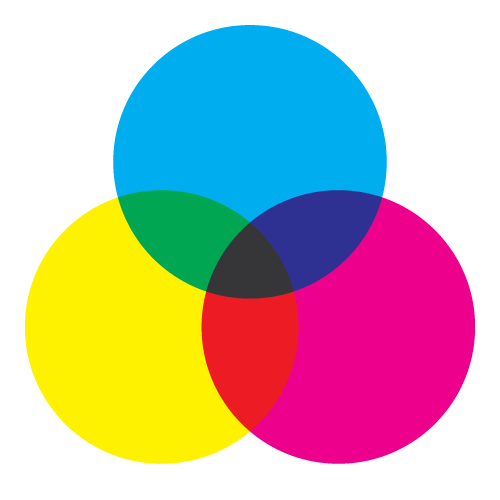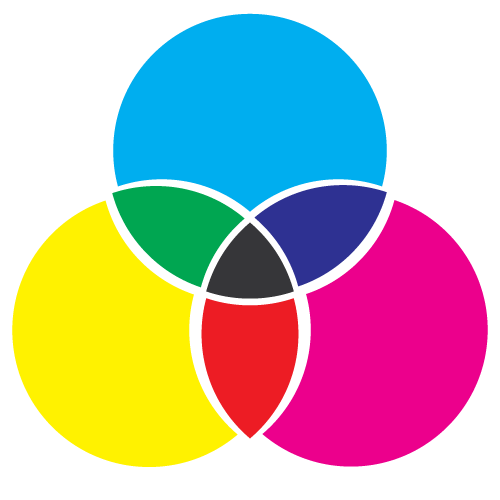Overprint Flattening
Overprint flattening is the process in which a PDF file is modified without changing its visual appearance to allow it to be reproduced on devices that don't support overprint. During this process objects that overprint are modified or replaced by other objects to ensure they will have the same visual appearance without relying on overprint.
Background
Below is an example of three overprinting circles. The PDF file in question contains exactly three objects: a cyan circle, a magenta cirle and a yellow circle. Because the three circles are set to overprint, the end result yields 7 colors. Pure magenta, yellow and cyan, three mix-colors of two primary colors and one mix-color of all three primary colors.

If this file is reproduced or viewed on a device that doesn't support overprint, it will look as the following image:

To avoid this, the file could be overprint flattened. During this process the overprint flattening engine will break apart the three circles in different pieces, each piece representing one color. In the next picture you see the result of this operation; for clarity the fragments have been moved slightly apart so you can see they are now differently shaped circle fragments. Remark that the colors still look the same and that without moving the fragments the PDF file would look visually identical.

Advantages and disadvantages
The advantage of overprint flattening a PDF file is that it no longer relies on the overprinting of its objects. The PDF file will now look the same in Apple Preview as when printed for example. In some cases this is highly desirable; if you cannot control what environment a client might use to validate or proof a PDF file, not relying on overprint removes a potential source of problems.
The disadvantages shouldn't be underestimated however:
- Flattening overprint is a complex operation. It takes time but more importantly introduces a potential for problems. Most commonly those problems would mean that the file would in fact look different after having being flattened.
- Flattening overprint typically renders PDF files more complex. It will increase the file size of the file, and in most cases increase the loading time in viewers. Specifically on mobile devices this may be a source of concern.
- Lastly flattening overprint is known to introduce visual border defects. These most of the time appear as a fine white line that may or may not disappear while zooming in and out in a PDF viewer (depending on the actual zoom factor). Most of the time these white lines are not visible in the printed piece, but there are exceptions to that rule (you should definitely not rely on those lines only being there while viewing the PDF file on screen).
As a general rule, try to avoid overprint flattening unless absolutely necessary.


